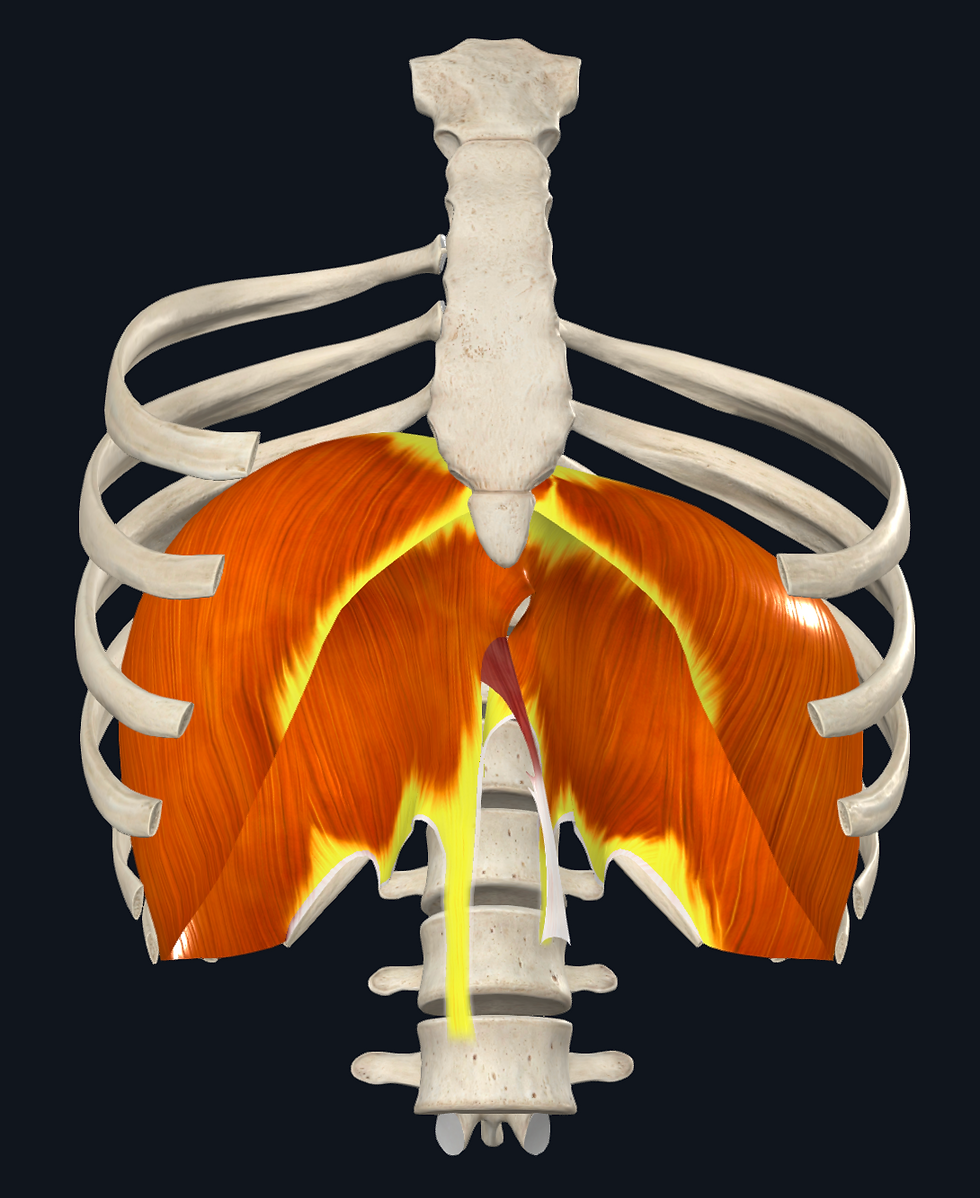The Vital Connection Between Breathing and Pain-Free Movement
- Dr. David Didlake, DPT

- Jul 1, 2024
- 3 min read
Updated: Mar 3

Why Breathing Matters
We can't survive without it for more than a few minutes. And no, I'm not talking about smartphones, the internet, or even golf! While breathing doesn't cost money, improper breathing can cost you decreased function, pain, and reduced movement efficiency.
In my professional opinion, breathing represents one of the most important yet underappreciated aspects of physical health—often overlooked as a significant source of dysfunction.
What Defines Good Breathing?
For centuries, disciplines like yoga, martial arts, and various spiritual practices have recognized breathing as essential to physical and mental wellbeing.

Diaphragmatic Breathing: The Gold Standard
Good breathing, also known as diaphragmatic or belly breathing, involves coordinated movement of the abdomen and both the upper and lower rib cage. The diaphragm serves as the primary muscle for effective breathing and is perfectly designed for this purpose:
Attaches to the lower six ribs
Connects to the lower part of the sternum
Anchors to lumbar vertebrae L1, L2, and L3

Upper Chest Breathing: The Problematic Pattern
Conversely, poor breathing (upper chest breathing) typically involves:
Excessive upper rib cage movement
Minimal lower rib cage engagement
Overuse of secondary neck muscles including:
Sternocleidomastoid
Upper trapezius
Scalene muscles
This improper pattern creates significant problems. Using these secondary muscles for regular breathing can trigger:
Neck pain
Formation of musculoskeletal trigger points
Low back pain
Pelvic discomfort
Because the diaphragm is THE primary breathing muscle, problems inevitably develop when secondary muscles must compensate.
Quick Self-Assessment
Research from 2002 and 2006 found that individuals who couldn't hold their breath for more than 20 seconds demonstrated dysfunctional breathing patterns (Warburton and Jack 2006; Stark and Stark 2002).
Self-test: Can you hold your breath for more than 20 seconds? If not, the techniques below may be particularly valuable for you.
Improving Your Breathing at Rest
Most people unknowingly develop poor habits, taking short shallow breaths through their mouth while elevating their shoulders during inhalation—a major "don't" for optimal breathing.
Try This Simple Exercise:
Either lie on your back or recline comfortably in a chair
Place one hand on your belly and the other on your chest
Inhale slowly through your nose—your abdomen should rise before your chest
Use your hands for feedback on the proper sequence (abdomen rises first, then chest)
With each exhalation, consciously relax your muscles, especially around your head and neck
Practice slow, controlled breathing:
Aim for 4-6 seconds of inhalation
Extend exhalation to 8-10 seconds
Coordinating Breathing With Movement
Breathing naturally synchronizes with spinal movement:
Inhalation facilitates spinal extension
Exhalation promotes spinal flexion
For Stretching and Non-Resistance Movements:
Exhalation increases muscle relaxation and should be used deliberately to help lengthen muscles and fascia.

For Loaded Exercises (like deadlifts):
Learn to inhale properly while increasing intra-abdominal pressure to enhance spinal stability.

The Consequences of Dysfunctional Breathing
As mentioned earlier, improper breathing patterns can lead to multiple issues:
Neck pain and tension
Trigger point formation
Low back pain
Pelvic discomfort

While practicing proper breathing techniques often resolves these issues, some physical limitations may require professional intervention:
Thoracic spine mobility restrictions
Inter-rib soft tissue tightness
Rib joint mobility limitations
Professional Support for Better Breathing and Less Pain
If you suspect musculoskeletal restrictions are limiting your breathing function, professional help is available. At Integrative Therapeutics home of the Saint Louis Golf Doc, we specialize in comprehensive assessment and treatment of breathing-related dysfunction.
Our holistic approach addresses both breathing mechanics and associated pain patterns, helping you achieve optimal function and comfort.
If you've been holding your breath because you haven't found excellent conservative care, now's your opportunity to breathe a huge sigh of relief. We're here for you.
Schedule Your Session Today!
Here's to your health!
Dr. David Didlake, DPT
PT, Cert. SMT/DN, CSCS, Cert. TPI Medical Level 3, Dip. Osteopractic, FAAOMPT
Owner, Integrative Therapeutics "Home of the Saint Louis Golf Doc"
Follow me @theintegrativeclinic @thestlgolfdoc
Related Articles
Manipulation Therapy Explained: Benefits, Safety, and When It's Right For You. by Dr. David Didlake, DPT
Electric Dry Needling: A Modern Approach to Pain Relief. by Dr. David Didlake, DPT
Near Infrared Light Therapy: The Red Light Revolution in Healthcare. by Dr. David Didlake, DPT
What is Physical Therapy? Understanding Treatment, Benefits & Expert Care. by Dr. David Didlake, DPT
References For those interested in the scientific evidence behind breathing, we've included some key research citations:
Warburton C, Jack S. Can you diagnose hyperventilation? Chron Respir Dis. 2006;3:113-115.
Stark J, Stark R. The carbon dioxide syndrome. Coorparoo: Buteyko On Line Ltd; 2002.
This article is for informational purposes only and does not constitute medical advice. Always consult with a qualified healthcare provider before beginning any new treatment.




Comments